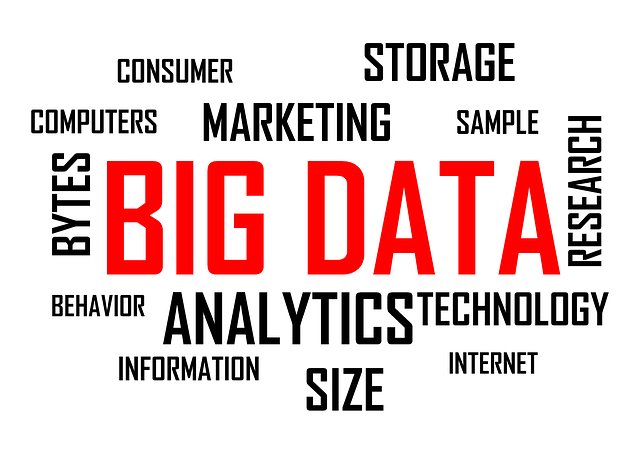In the world of artificial intelligence, the quality of data is incredibly important. Think of data as the foundation on which intelligent systems build their understanding and decision-making. For these systems to perform well, the data they learn from needs to be accurate, complete and up-to-date. If the data is flawed or messy, the systems end up making mistakes or delivering biased results. By focusing on high-quality data, businesses ensure that their intelligent systems work effectively, offering reliable insights and making smarter decisions. Good data is like a strong base for a house—it supports everything built on top of it, helping these systems deliver their best performance and truly benefit your organization.
Table of Contents

What is AI ?
Artificial intelligence is like teaching machines to think and learn the way we do. It helps computers understand patterns, make decisions and solve problems by processing lots of data. You see it in everyday tools like virtual assistants that understand your voice or recommendations on streaming platforms.
It’s also used in healthcare to diagnose illnesses and in finance to spot potential fraud. Most intelligent systems today are specialized, handling specific tasks really well, but the goal is to create systems that are as adaptable and intelligent as a human. As these technologies continue to evolve, they’re becoming a bigger part of our lives, making things easier, faster and more efficient.
What is data ?
Data is essentially information that we gather and use to understand things better. It is anything—numbers, words, pictures, or even sounds—that gives us details about something. For example, when you shop online, the items you look at and buy create data about your preferences.
Data is organized neatly, like a list of names and addresses, or it is more scattered, like all the posts and photos on social media. We collect data from many places, like websites, apps, or surveys. By analyzing this data, businesses and researchers uncover patterns, make informed decisions and improve products or services. In a way, data is like the puzzle pieces that help us see the bigger picture.

What is good quality data ?
Good quality data is like having a well-organized and accurate set of information that you rely on. It means the data is correct and truly reflects reality without errors. It’s complete, so nothing important is missing and it’s consistent, following the same format and standards throughout. Relevant data is directly useful for your goals and it’s timely, meaning it’s up-to-date with the latest information. When data meets these standards, it supports better decision-making, ensures AI models function reliably and offers valuable insights that guide you effectively. High-quality data helps you navigate challenges and opportunities more effectively, making it a key asset in achieving success.
Relationship between Data and AI
1. Data Fuels AI Learning:
Artificial intelligence models rely on large volumes of data to learn and make accurate predictions. The more data they process, the better they recognize patterns and refine their predictions. This extensive data exposure helps these models improve over time, making them more effective at analyzing trends and making informed decisions based on the information they learn.
2. AI Enhances Data Processing
Artificial intelligence tools are great at sifting through huge amounts of data quickly, spotting patterns and insights that might be too complex for us to see on our own. This means businesses get valuable information and make smart decisions fast. These tools make it easier to understand what the data is revealing, helping companies stay ahead and make better choices.
3. Continuous Improvement
Artificial intelligence models keep getting better as they are exposed to new data. With each batch of data, they learn more and refine their predictions, becoming more accurate and effective. This continuous learning process helps these models adapt to new trends and information, improving their performance over time and making them more reliable for various applications.
4. AI Enables Real-Time Data Use
AI analyze data instantly as it arrives, letting businesses react to changes or events right away. This means companies make quick, informed decisions and keep things running smoothly. With AI handling real-time data, businesses stay nimble and respond faster to new information, helping them stay ahead in a fast-paced world.
Why is Good Quality Data needed for training AI Models?
Intelligent systems rely on clean, accurate data to function well. However, data in its raw form is often incomplete, inconsistent, or contains errors. Human involvement is important in this process. People use their skills and knowledge to sort through this data, fixing mistakes and ensuring it’s high quality for the systems to work with. Essentially, human data curation acts as a bridge between messy real-world information and the structured, clean data that intelligent systems require.
This careful preparation improves the accuracy and effectiveness of artificial intelligence systems. Furthermore, as these models become more complex, the demand for high-quality data increases. Data scientists are constantly developing new techniques for data cleaning and validation to ensure that the models are trained on the most reliable information possible. This highlights the ongoing need for collaboration between artificial intelligence specialists and data curators to achieve optimal results.
5 Reasons –
1. Accurate Outputs
When AI models learn from clean, reliable data, they produce outputs that closely mirror reality. Clean data minimizes the chances of the model learning from errors or inconsistencies present in the training data. This ensures that the outputs generated by the AI model are trustworthy and be relied upon for critical tasks such as medical diagnosis or financial forecasting.
2. Informed Decisions
In fields like finance and healthcare, where artificial intelligence increasingly aids decision-making, the quality of the training data directly impacts the accuracy of these decisions. Flawed or inaccurate data lead to erroneous conclusions and, consequently, poor decision-making. High-quality data ensures that the decisions made by these systems are based on correct and reliable information, reducing the risk of negative consequences.
3. Reduced Bias
Real-world data often reflects societal biases, which are inadvertently learned and perpetuated by artificial intelligence models if not properly addressed. By employing good data quality practices, such as bias detection and mitigation techniques, developers ensure that these models are trained on unbiased data. This helps prevent the amplification of existing biases in the model’s outputs, promoting fairness and equity.
4. Improved Generalizability
Artificial intelligence models trained on high-quality data with a diverse range of examples are better equipped to generalize their learnings to new, unseen data. Quality data allows these models to capture a broader spectrum of patterns and variations, enabling them to perform well across different scenarios and applications. This enhances the versatility and applicability of artificial intelligence models in real-world settings.
5. Faster Training
Cleaning and preprocessing messy data is a time-consuming and resource-intensive task. By using high-quality data from the beginning, developers streamline the training process, eliminating the need for extensive data cleaning efforts. This not only saves time but also reduces the computational resources required for training, accelerating the development cycle and enabling quicker deployment of AI models.
6. Scalability and Adaptability
AI models are often deployed in dynamic environments where they need to adapt to new data and evolving conditions. Good quality data helps create models that are more scalable and adaptable. These models are updated with new data and continue to perform well, as they have been trained on a solid foundation of accurate and representative information.
7. Better Performance with Complex Models
As artificial intelligence models, particularly deep learning models, become more complex, they require large amounts of high-quality data to perform well. Complex models capture intricate patterns and relationships in data, but only if the data is accurate and representative. Poor quality data cause these models to overfit (memorize the training data) or underperform, failing to deliver the expected results.

In conclusion, good quality data is fundamental for the effective training and operation of artificial intelligence models. Accurate, complete and relevant data ensures that these systems produce reliable outputs, make informed decisions and operate fairly. By reducing biases, improving generalizability and enabling faster training, high-quality data helps artificial intelligence models adapt to new challenges and environments efficiently. As artificial intelligence continues to evolve, the emphasis on clean and well-organized data becomes increasingly important for achieving optimal performance and fostering innovation. Ensuring data quality not only enhances the effectiveness of artificial intelligence but also builds trust and supports better decision-making across various applications.
Himcos specializes in cleaning data, refactoring custom software and clearing backlogs to prepare your custom software and data for artificial intelligence integration. Our services help ensure your AI initiatives are built on a strong foundation of high-quality data, maximizing the benefits and minimizing the risks associated with adopting artificial intelligence.



